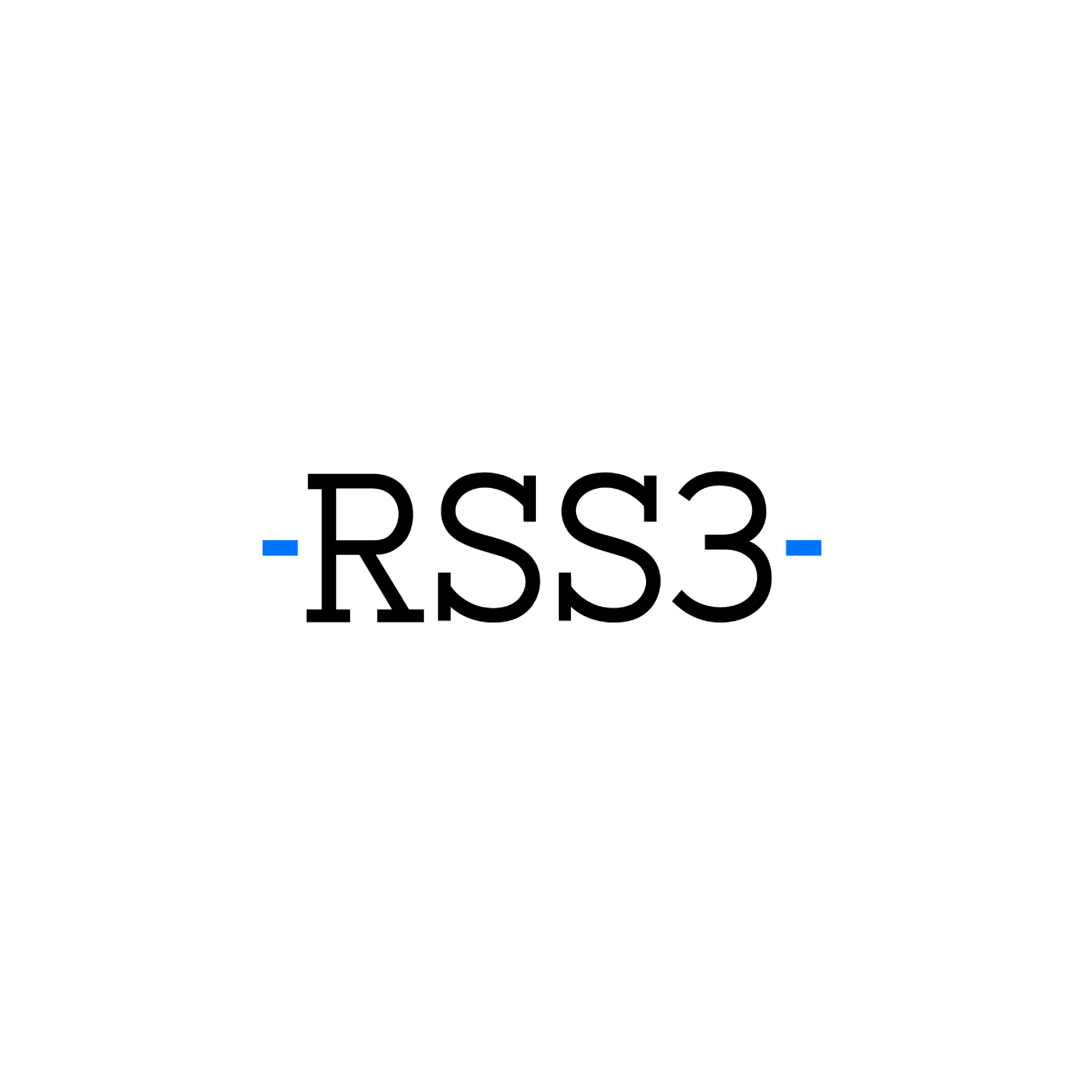-
 Bitcoin
Bitcoin $82,972.1210
2.66% -
 Ethereum
Ethereum $1,556.5991
0.67% -
 Tether USDt
Tether USDt $0.9994
0.03% -
 XRP
XRP $2.0190
0.69% -
 BNB
BNB $585.2539
1.02% -
 Solana
Solana $121.3432
5.21% -
 USDC
USDC $1.0001
0.02% -
 Dogecoin
Dogecoin $0.1593
1.80% -
 TRON
TRON $0.2443
3.62% -
 Cardano
Cardano $0.6257
0.23% -
 UNUS SED LEO
UNUS SED LEO $9.3379
-0.83% -
 Chainlink
Chainlink $12.5645
1.33% -
 Avalanche
Avalanche $18.9909
2.79% -
 Stellar
Stellar $0.2345
0.69% -
 Shiba Inu
Shiba Inu $0.0...01213
2.25% -
 Toncoin
Toncoin $2.8755
-1.17% -
 Sui
Sui $2.1733
0.19% -
 Hedera
Hedera $0.1660
-2.45% -
 Bitcoin Cash
Bitcoin Cash $313.1267
5.51% -
 MANTRA
MANTRA $6.4235
-0.19% -
 Litecoin
Litecoin $75.5959
1.00% -
 Polkadot
Polkadot $3.5519
0.62% -
 Dai
Dai $0.9999
0.01% -
 Bitget Token
Bitget Token $4.2991
0.85% -
 Hyperliquid
Hyperliquid $15.2864
2.68% -
 Ethena USDe
Ethena USDe $0.9988
0.03% -
 Pi
Pi $0.6838
14.75% -
 Monero
Monero $209.3662
3.22% -
 Uniswap
Uniswap $5.1800
1.14% -
 OKB
OKB $52.8717
-0.74%
How to read the K-line of a contract on Bybit
For effective cryptocurrency trading, interpreting Bybit contract K-line charts is essential, providing valuable insights into price movements, market sentiment, and potential trading opportunities.
Nov 14, 2024 at 11:35 am
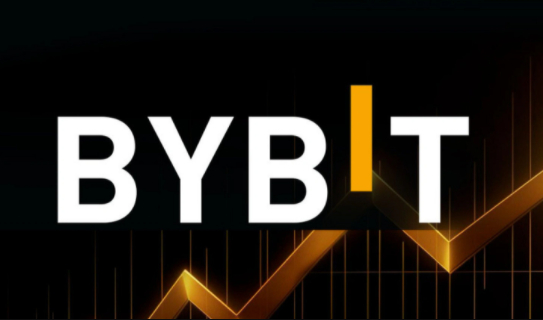
How to Decipher the Bybit Contract K-line Chart: A Comprehensive Guide
Delving into the intricacies of cryptocurrency trading necessitates a thorough understanding of technical analysis tools. One indispensable aspect of this analysis is the study of K-line charts, which provide valuable insights into price movements and market sentiment. This guide will delve into the world of Bybit contract K-line charts, empowering you with the knowledge to interpret these charts effectively and enhance your trading strategies.
Step 1: Understanding the Basics of K-line Charts
- K-line charts are visual representations of price movements over a specified period, typically ranging from minutes to months.
- Each candle on the K-line chart depicts the open, high, low, and close prices for that particular time interval.
- The body of the candle represents the difference between the open and close prices. A green candle indicates a price increase (close price > open price), while a red candle signifies a decrease (close price < open price).
- The wicks extend above and below the candle body, representing the highest and lowest prices reached during that period.
Step 2: Identifying Key Elements on the Bybit Contract K-line Chart
- Time Interval: Bybit allows traders to customize the time interval of the K-line chart. Selecting an appropriate interval depends on the trading strategy and market volatility.
- Candle Patterns: K-line charts feature various candle patterns that can provide insights into market sentiment and potential price movements. For example, a hammer candlestick indicates a potential trend reversal, while a shooting star pattern suggests a potential decline.
- Moving Averages: Moving averages are technical indicators that smooth out price fluctuations and help identify potential support and resistance levels. Bybit provides a range of moving averages, including simple moving averages (SMA) and exponential moving averages (EMA).
- Volume: The volume indicator measures the trading activity for a particular time interval. High volume often accompanies significant price movements and can indicate market sentiment.
- Relative Strength Index (RSI): The RSI is a momentum indicator that ranges from 0 to 100. It helps identify overbought or oversold market conditions, as well as potential price reversals.
Step 3: Interpreting K-line Charts for Trading Decisions
- Identifying Trends: K-line charts can help identify prevailing trends by observing the direction and duration of price movements. A series of higher highs and higher lows indicate an uptrend, while a series of lower highs and lower lows indicate a downtrend.
- Recognizing Support and Resistance: Support refers to a price level below which the price tends to bounce, while resistance refers to a price level above which the price struggles to break through. Analyzing K-line charts can identify potential support and resistance zones based on previous price movements.
- Spotting Chart Patterns: Chart patterns are specific formations on K-line charts that can provide insights into the likely continuation or reversal of a trend. Examples include triangles, flags, and pennants. Recognizing these patterns can enhance trading strategies by anticipating potential price reversals.
- Using Technical Indicators: Technical indicators complement K-line charts by providing additional insights into price movements, market momentum, and potential trading signals. Combining K-line analysis with technical indicators can provide a more comprehensive view of market dynamics.
Step 4: Tips for Effective K-line Analysis
- Define a Trading Plan: Having a defined trading plan that outlines entry and exit strategies, as well as risk management protocols, is crucial before using K-line analysis for trading decisions.
- Consider Multiple Time Frames: Analyzing K-line charts on different time intervals can provide insights into both short-term and long-term market trends. Combining multiple time frames helps reduce noise and identify potential trading opportunities.
- Practice and Experiment: Proficiency in K-line analysis requires practice and experimentation. Using a demo account or smaller trade sizes allows traders to test their strategies and gain experience without incurring substantial risks.
- Stay Updated with Market News: Incorporating market news and updates into your analysis can provide additional context to K-line chart interpretations. This can help identify potential factors driving price movements and make informed trading decisions.
Conclusion
Deciphering Bybit contract K-line charts empowers traders with valuable insights into market dynamics and price movements. By understanding the basics of K-line charts, identifying key elements, interpreting charts for trading decisions, and following best practices, traders can leverage this powerful tool to enhance their decision-making process and potentially increase their profitability in the cryptocurrency market.
Disclaimer:info@kdj.com
The information provided is not trading advice. kdj.com does not assume any responsibility for any investments made based on the information provided in this article. Cryptocurrencies are highly volatile and it is highly recommended that you invest with caution after thorough research!
If you believe that the content used on this website infringes your copyright, please contact us immediately (info@kdj.com) and we will delete it promptly.
- Nova Labs, the company behind the Helium blockchain network, has been dismissed of all charges by the U.S. Securities and Exchange Commission (SEC)
- 2025-04-12 12:00:13
- Roll20 Foreground Layer Promises Ambitious New Feature to Spice Up Your Digital Maps
- 2025-04-12 12:00:13
- Solana (SOL) Is Back in the Spotlight as Its Decentralized Exchange (DEX) Volume Skyrockets
- 2025-04-12 11:55:14
- 1894-S Barber Dime: One of the Rarest and Most Valuable US Coins
- 2025-04-12 11:55:14
- As attention shifts across the crypto market this week, a growing number of experienced investors are stepping away from the usual headlines and looking toward lesser-known assets
- 2025-04-12 11:50:13
- title: Bitcoin as a Hedge and Symbol of Freedom
- 2025-04-12 11:50:13
Related knowledge
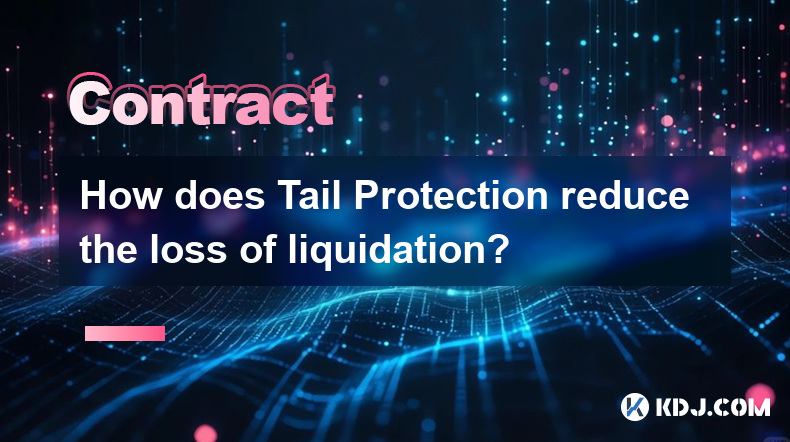
How does Tail Protection reduce the loss of liquidation?
Apr 11,2025 at 01:50am
Introduction to Tail Protection in CryptocurrencyTail Protection is a mechanism designed to mitigate the risks associated with liquidation in cryptocurrency trading. Liquidation occurs when a trader's position is forcibly closed by the exchange due to insufficient margin to cover potential losses. This often happens in leveraged trading, where traders b...
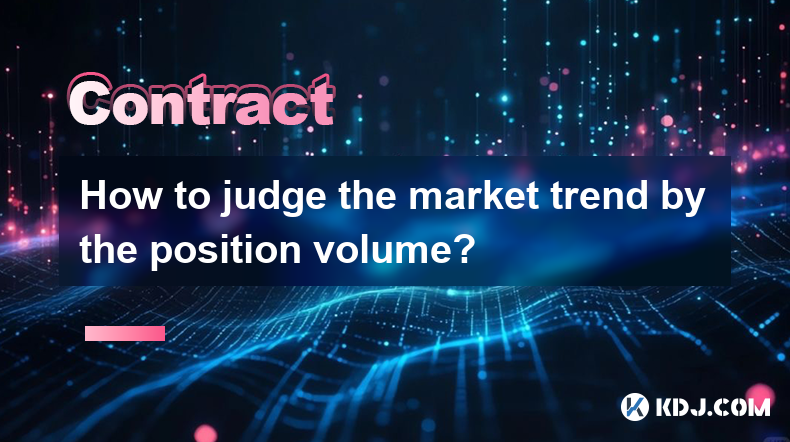
How to judge the market trend by the position volume?
Apr 11,2025 at 02:29pm
Understanding how to judge the market trend by position volume is crucial for any cryptocurrency trader. Position volume, which refers to the total number of open positions in a particular cryptocurrency, can provide valuable insights into market sentiment and potential price movements. By analyzing this data, traders can make more informed decisions ab...

Why does a perpetual contract have no expiration date?
Apr 09,2025 at 08:43pm
Perpetual contracts, also known as perpetual futures or perpetual swaps, are a type of derivative product that has gained significant popularity in the cryptocurrency market. Unlike traditional futures contracts, which have a fixed expiration date, perpetual contracts do not expire. This unique feature raises the question: why does a perpetual contract ...
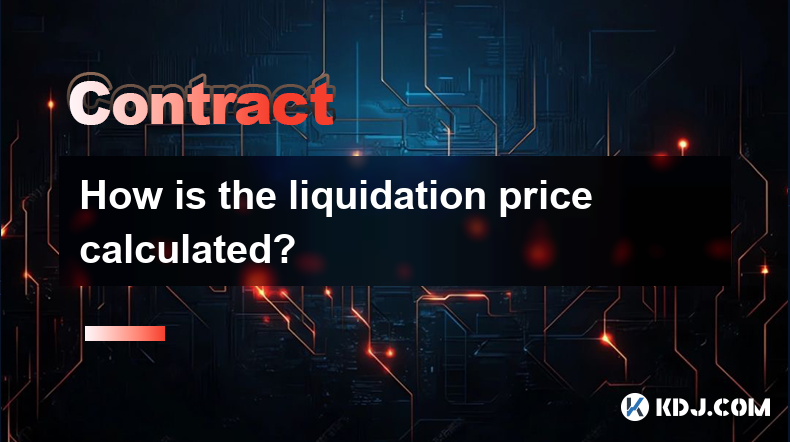
How is the liquidation price calculated?
Apr 12,2025 at 01:35am
Introduction to Liquidation PriceLiquidation price is a critical concept in the world of cryptocurrency trading, particularly when dealing with leveraged positions. Understanding how this price is calculated is essential for traders to manage their risk effectively. The liquidation price is the point at which a trader's position is forcibly closed by th...
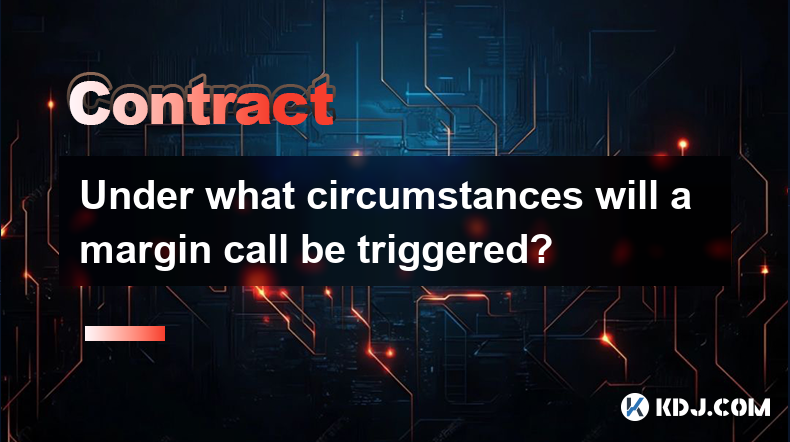
Under what circumstances will a margin call be triggered?
Apr 08,2025 at 02:43pm
Margin trading in the cryptocurrency market allows traders to borrow funds to increase their trading position, potentially amplifying both gains and losses. A critical aspect of margin trading is understanding when a margin call might be triggered, as it can significantly impact your trading strategy and financial health. In this article, we will explor...
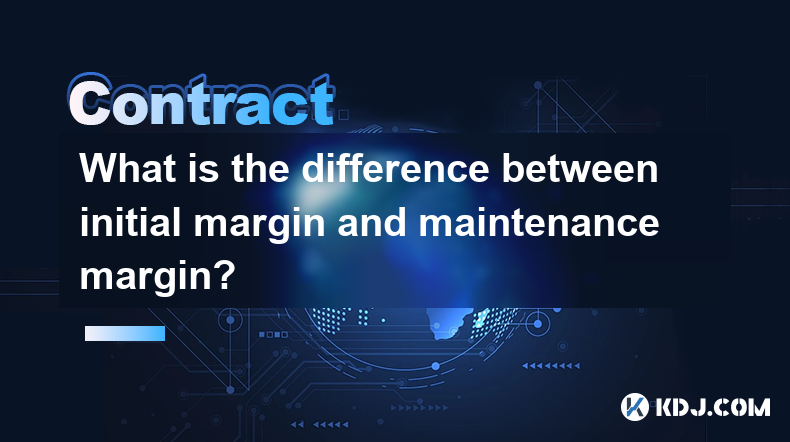
What is the difference between initial margin and maintenance margin?
Apr 11,2025 at 01:14pm
In the world of cryptocurrency trading, understanding the concepts of initial margin and maintenance margin is crucial for managing risk and maximizing potential returns. These terms are fundamental to margin trading, a practice that allows traders to borrow funds to increase their trading position. Let's delve into the differences between initial margi...

How does Tail Protection reduce the loss of liquidation?
Apr 11,2025 at 01:50am
Introduction to Tail Protection in CryptocurrencyTail Protection is a mechanism designed to mitigate the risks associated with liquidation in cryptocurrency trading. Liquidation occurs when a trader's position is forcibly closed by the exchange due to insufficient margin to cover potential losses. This often happens in leveraged trading, where traders b...

How to judge the market trend by the position volume?
Apr 11,2025 at 02:29pm
Understanding how to judge the market trend by position volume is crucial for any cryptocurrency trader. Position volume, which refers to the total number of open positions in a particular cryptocurrency, can provide valuable insights into market sentiment and potential price movements. By analyzing this data, traders can make more informed decisions ab...

Why does a perpetual contract have no expiration date?
Apr 09,2025 at 08:43pm
Perpetual contracts, also known as perpetual futures or perpetual swaps, are a type of derivative product that has gained significant popularity in the cryptocurrency market. Unlike traditional futures contracts, which have a fixed expiration date, perpetual contracts do not expire. This unique feature raises the question: why does a perpetual contract ...

How is the liquidation price calculated?
Apr 12,2025 at 01:35am
Introduction to Liquidation PriceLiquidation price is a critical concept in the world of cryptocurrency trading, particularly when dealing with leveraged positions. Understanding how this price is calculated is essential for traders to manage their risk effectively. The liquidation price is the point at which a trader's position is forcibly closed by th...

Under what circumstances will a margin call be triggered?
Apr 08,2025 at 02:43pm
Margin trading in the cryptocurrency market allows traders to borrow funds to increase their trading position, potentially amplifying both gains and losses. A critical aspect of margin trading is understanding when a margin call might be triggered, as it can significantly impact your trading strategy and financial health. In this article, we will explor...

What is the difference between initial margin and maintenance margin?
Apr 11,2025 at 01:14pm
In the world of cryptocurrency trading, understanding the concepts of initial margin and maintenance margin is crucial for managing risk and maximizing potential returns. These terms are fundamental to margin trading, a practice that allows traders to borrow funds to increase their trading position. Let's delve into the differences between initial margi...
See all articles





















![Crypto Otaku - CRYPTO CHAOS! 83K BITCOIN! CRYPTO RALLY!! XCN , JASMY , SWFTC LEAD!!! [Episode 228] Crypto Otaku - CRYPTO CHAOS! 83K BITCOIN! CRYPTO RALLY!! XCN , JASMY , SWFTC LEAD!!! [Episode 228]](/uploads/2025/04/12/cryptocurrencies-news/videos/crypto-otaku-crypto-chaos-k-bitcoin-crypto-rally-xcn-jasmy-swftc-lead-episode/image-1.webp)



























































